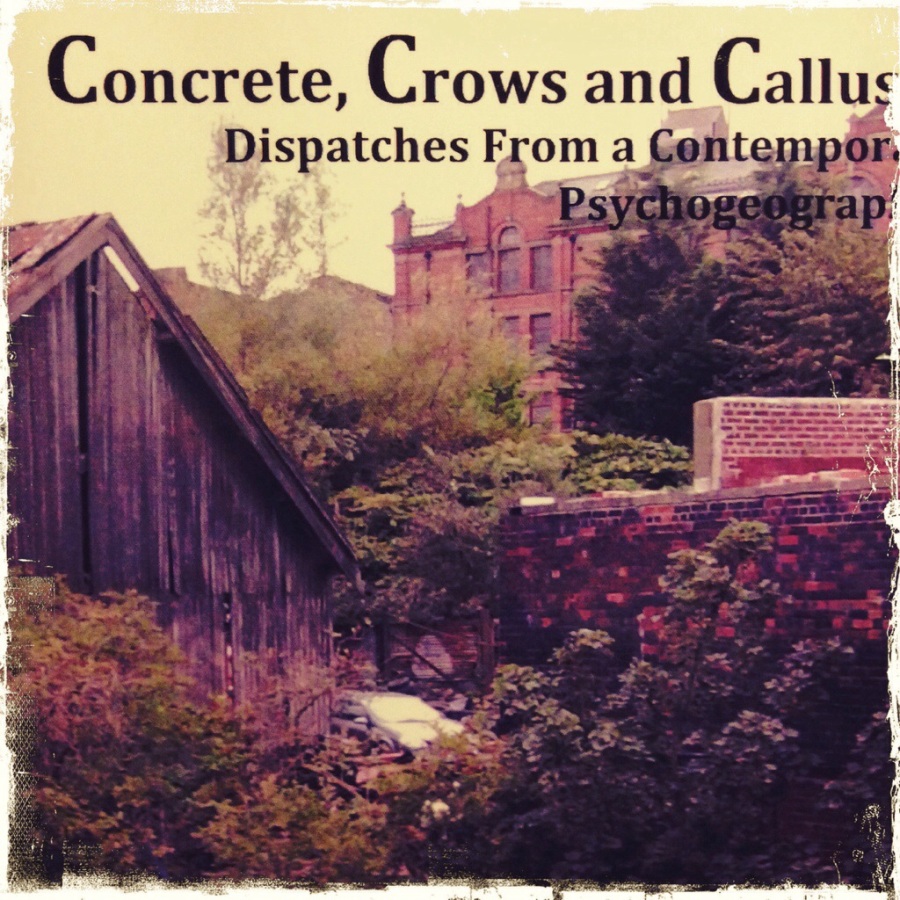Richardson, T. (2013) Concrete, Crows and Calluses Dispatches from a Contemporary Psychogeographer Particulations Press
The online blurb said: this book represents the thoughts and experiences of someone working in the field of urban walking and psychogeography. It attempts to provide a moment-in-time representation of urban aesthetics, while providing analyses and critiques of urban space. But in truth, I fell for the title.
Concrete, Crows & Calluses promised a lively and entertaining read, the sub-title ‘Dispatches from a Contemporary Psychogeographer’ hinted at the book that might containing tantalizing nuggests of thought-provoking writing about Richardson’s own hybrid psychogeographic creation: ‘schizocartography’ where:
…schizo is used as a way of offering up the possibility of multiple voices, and alternative world-views…
Now I’m all for a personal redefining of psychogeography, in fact I’d argue that it’s impossible not to work from your own rulebook. As, by definition, it’s all so hugely subjective; it’s default ‘personal’; it’s yourself acting as the lens through which you see the world and a crucible into which experiences and observations pour, as a means of you coming to an understanding of people’s relationship to place, and a place’s impact on people.
Richardson’s hybrid made sense, offering up a democratic vision of multiple voices, multiple ways of seeing. It seemed to open the door for some interesting creative activity, but then I lost my way somewhat when Richardson went on to state:
…schizocartography enables alternative existential modes for individuals in order to challenge dominant representations and power structures.
Now that seems quite a weight to place on the shoulders of what is essentially the outcome of an activity predicated on small groups of people undertaking informed and open-minded walking!
And then I became mired in:
Schizocartography challenges anti-production, the homogenizing character of over-riding forms that work towards silencing heterogeneous voices.
Happily this quote comes on page 52 of the book(let), well over half way through what is, in effect, a compilation of posts from Richardson’s blog Particulations. The first fifty or so pages did have much of merit, including some useful and practical advice on how to approach a place using multiple sense:
- look above and below eye level
- be conscious of ‘atmospheres’ attached to a particular place
- moving through the place in unconventional ways
- finding imaginative ways to discover found objects
- seek the silent, unnoticed places
- think creatively about documenting the findings
Sadly, just ten pages are set aside for sharing the outcome of these interesting suggestions, and disappointingly what’s there isn’t hugely groundbreaking. As with so much of my reading on psychogeography the proof of its potential for unpicking the world around us rests not in the elegance or eloquence of the theory but in the affect or the outcome of the activities linked to it.
Perhaps, in the end, the attraction of Tina Richardson’s self publicized book is it’s honesty. It illustrates the general crisis at the heart of Anglo-psychogeography ie. fine words do not a practical philosophy of place make, nor are they any guarantee of insightful, astute or radical investigations into, or responses to, a chosen place.
